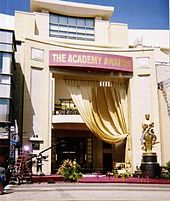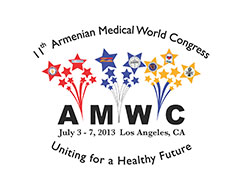About Los Angeles
Culture
 Los Angeles is often billed as the “Creative Capital of the World”, due to the fact that one in every six of its residents works in a creative industry.[64] According to the USC Stevens Institute for Innovation, “there are more artists, writers, filmmakers, actors, dancers and musicians living and working in Los Angeles than any other city at any time in the history of civilization.”[65]
Los Angeles is often billed as the “Creative Capital of the World”, due to the fact that one in every six of its residents works in a creative industry.[64] According to the USC Stevens Institute for Innovation, “there are more artists, writers, filmmakers, actors, dancers and musicians living and working in Los Angeles than any other city at any time in the history of civilization.”[65]
Los Angeles is home to Hollywood, globally recognized as the epicenter of the motion picture industry. A testament to its preeminence in film, the city plays host to the annual Academy Awards, the oldest and one of the most prominent award ceremonies in the world. Finally, Los Angeles is home to the USC School of Cinematic Arts, the oldest film school in the United States.[66]
The performing arts play a major role in Los Angeles’ cultural identity. According to the USC Stevens Institute for Innovation, “there are more than 1,100 annual theatrical productions and 21 openings every week.”[65] The Los Angeles Music Center is “one of the three largest performing arts centers in the nation,” with more than 1.3 million visitors per year.[67] The Walt Disney Concert Hall, centerpiece of the Music Center, is home to the prestigious Los Angeles Philharmonic. Notable organizations such as Center Theatre Group, the Los Angeles Master Chorale, and the Los Angeles Opera are also resident companies of the Music Center. Talent is locally cultivated at premier institutions such as the Colburn School and the USC Thornton School of Music.
of the Music Center, is home to the prestigious Los Angeles Philharmonic. Notable organizations such as Center Theatre Group, the Los Angeles Master Chorale, and the Los Angeles Opera are also resident companies of the Music Center. Talent is locally cultivated at premier institutions such as the Colburn School and the USC Thornton School of Music.
Museums and Galleries
There are 841 museums and art galleries in Los Angeles County.[68] In fact, Los Angeles has more museums per capita than any other city in the world.[68] Some of the notable museums are the Los Angeles County Museum of Art (the largest art museum in the Western United States[69]), the Getty Center (part of the larger J. Paul Getty Trust, the world’s wealthiest art institution[70]), and the Museum of Contemporary Art. A significant number of art galleries are located on Gallery Row, and tens of thousands attend the monthly Downtown Art Walk there.[71]
Transit Systems
 The Los Angeles County Metropolitan Transportation Authority and other agencies operate an extensive system of bus lines, as well as subway and light rail lines across Los Angeles County, with a combined monthly ridership (measured in individual boardings) of 38.8 million as of September, 2011. The majority of this (30.5 million) is taken up by the city’s bus system,[99] the second busiest in the country. The subway and light rail combined average the remaining roughly 8.2 million boardings per month.[99] In 2005, 10.2% of Los Angeles commuters rode some form of public transportation.[100]
The Los Angeles County Metropolitan Transportation Authority and other agencies operate an extensive system of bus lines, as well as subway and light rail lines across Los Angeles County, with a combined monthly ridership (measured in individual boardings) of 38.8 million as of September, 2011. The majority of this (30.5 million) is taken up by the city’s bus system,[99] the second busiest in the country. The subway and light rail combined average the remaining roughly 8.2 million boardings per month.[99] In 2005, 10.2% of Los Angeles commuters rode some form of public transportation.[100]
The city’s subway system is the ninth busiest in the United States and its light rail system is the country’s second busiest.[101] The rail system includes the Red and Purple subway lines, as well as the Gold, Blue, Expo, and Green light rail lines. The Metro Orange and Silver lines are bus rapid transit lines with stops and frequency similar to those of light rail. The city is also central to the commuter rail system Metrolink, which links Los Angeles to all neighboring counties as well as many suburbs.
Besides the rail service provided by Metrolink and the Los Angeles County Metropolitan Transportation Authority, Los Angeles is served by inter-city passenger trains from Amtrak. The main rail station in the city is Union Station just north of Downtown.
Airports
 The main Los Angeles airport is Los Angeles International Airport (IATA: LAX, ICAO: KLAX). The sixth busiest commercial airport in the world and the third busiest in the United States, LAX handled over 61 million passengers and 2 million tons of cargo in 2006. LAX is a hub for United Airlines[102]
The main Los Angeles airport is Los Angeles International Airport (IATA: LAX, ICAO: KLAX). The sixth busiest commercial airport in the world and the third busiest in the United States, LAX handled over 61 million passengers and 2 million tons of cargo in 2006. LAX is a hub for United Airlines[102]
Other major nearby commercial airports include:
- (IATA: ONT, ICAO: KONT) LA/Ontario International Airport, owned by the city of Los Angeles; serves the Inland Empire.
- (IATA: BUR, ICAO: KBUR) Bob Hope Airport, formerly known as Burbank Airport; serves the San Fernando and San Gabriel Valleys
- (IATA: LGB, ICAO: KLGB) Long Beach Airport, serves the Long Beach/Harbor area
- (IATA: SNA, ICAO: KSNA) John Wayne Airport of Orange County
One of the world’s busiest general-aviation airports is also located in Los Angeles, Van Nuys Airport (IATA: VNY, ICAO: KVNY).[103]
Seaports
 The Port of Los Angeles is located in San Pedro Bay in the San Pedro neighborhood, approximately 20 miles (32 km) south of Downtown. Also called Los Angeles Harbor and WORLDPORT LA, the port complex occupies 7,500 acres (30 km2) of land and water along 43 miles (69 km) of waterfront. It adjoins the separate Port of Long Beach.
The Port of Los Angeles is located in San Pedro Bay in the San Pedro neighborhood, approximately 20 miles (32 km) south of Downtown. Also called Los Angeles Harbor and WORLDPORT LA, the port complex occupies 7,500 acres (30 km2) of land and water along 43 miles (69 km) of waterfront. It adjoins the separate Port of Long Beach.
The sea ports of the Port of Los Angeles and Port of Long Beach together make up the Los Angeles/Long Beach Harbor.[104][105][106] Together, both ports are the fifth busiest container port in the world, with a trade volume of over 14.2 million TEU’s in 2008.[107] Singly, the Port of Los Angeles is the busiest container port in the United States and the largest cruise ship center on the West Coast of the United States – The Port of Los Angeles’ World Cruise Center served about 800,000 passengers in 2009.[108]
There are also smaller, non-industrial harbors along Los Angeles’ coastline.
The port includes four bridges: the Vincent Thomas Bridge, Henry Ford Bridge, Gerald Desmond Bridge, and Commodore Schuyler F. Heim Bridge.
Passenger ferry service from San Pedro to the city of Avalon on Santa Catalina Island is provided by Catalina Express.





